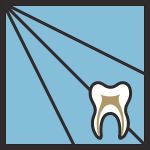Signs You Need Dental Treatment for Crooked Teeth: How to Know When to Seek Help
- 1. What Are Crooked Teeth?
- 2. Common Signs You May Need Dental Treatment for Crooked Teeth
- 3. The Effects of Leaving Crooked Teeth Untreated
- 4. Treatment Options for Crooked Teeth
- 5. Real-Life Case: A Journey to Correct Crooked Teeth
1. What Are Crooked Teeth?
Crooked teeth are teeth that are misaligned or out of place, leading to an uneven smile or bite. This can be due to various factors, such as genetics, thumb-sucking during childhood, injury, or habits like teeth grinding. Crooked teeth can affect the overall appearance of your smile, but they can also cause functional issues like difficulty chewing or speaking.
For many, crooked teeth are more than just a cosmetic issue—they can lead to oral health problems that require attention. If left untreated, crooked teeth can cause problems with the alignment of your bite and your jaw, which might lead to discomfort or more serious dental complications down the road.
2. Common Signs You May Need Dental Treatment for Crooked Teeth
There are several signs that suggest you may need dental treatment for crooked teeth. If you’re noticing any of these, it might be time to consult a dentist or orthodontist:
- Difficulty Chewing or Biting: If your crooked teeth are misaligned, it can affect how your upper and lower teeth come together, making chewing or biting food difficult.
- Speech Issues: Misalignment of teeth can cause speech impediments, such as difficulty pronouncing certain words or sounds, which can be a sign that treatment may be necessary.
- Jaw Pain or Discomfort: Uneven teeth can lead to jaw pain or tension as your jaw works harder to compensate for the misalignment. This can also lead to headaches or earaches.
- Visible Teeth Misalignment: If your teeth appear visibly crooked or you’re self-conscious about your smile, you may want to explore dental treatment options for a more aligned and attractive appearance.
- Teeth Grinding: People with crooked teeth might grind their teeth more often, which can wear down enamel and lead to further dental problems.
3. The Effects of Leaving Crooked Teeth Untreated
While crooked teeth may seem like just an aesthetic issue, leaving them untreated can result in a range of dental problems. Some of the potential effects of uncorrected crooked teeth include:
- Increased Risk of Tooth Decay: Misaligned teeth can create hard-to-reach spaces where plaque and food particles can accumulate, increasing the risk of cavities and gum disease.
- Gum Disease: If crooked teeth are not cleaned properly, they can contribute to gum disease, which can lead to inflammation, bleeding gums, and potential tooth loss.
- Damage to Tooth Enamel: Crooked teeth that rub against each other can lead to enamel erosion, making your teeth more susceptible to decay and sensitivity.
- Temporomandibular Joint (TMJ) Disorders: Misaligned teeth can cause your jaw to work harder, potentially leading to TMJ disorders, which cause pain, clicking sounds, and difficulty with jaw movement.
For these reasons, it’s essential to seek dental treatment if you’re experiencing any of the above symptoms related to crooked teeth.
4. Treatment Options for Crooked Teeth
When it comes to correcting crooked teeth, there are several treatment options available depending on the severity of the misalignment. Here are some common treatments to consider:
- Braces: Traditional metal braces are one of the most common and effective ways to straighten teeth. They work by gradually shifting teeth into the correct position over time.
- Clear Aligners (e.g., Invisalign): Clear aligners offer a more discreet alternative to traditional braces. These custom-made trays gradually shift teeth into place and can be removed for eating and cleaning.
- Veneers: In some cases, dental veneers may be an option for correcting mild misalignments. Veneers are thin shells placed over the front of the teeth to create a smoother appearance.
- Surgical Options: In severe cases of misalignment or jaw issues, surgery may be necessary to realign the jaw and teeth for proper function.
Consulting with an orthodontist is the best way to determine which treatment is right for you based on your specific needs and goals.
5. Real-Life Case: A Journey to Correct Crooked Teeth
Meet James, a 28-year-old man who had struggled with crooked teeth his whole life. Although his teeth were not severely misaligned, they caused him significant self-consciousness, especially when smiling. James decided to seek treatment and consulted with an orthodontist, who recommended clear aligners.
After starting treatment with Invisalign, James noticed significant improvements in both the alignment of his teeth and his confidence. The treatment took about 18 months, but the results were well worth it. James now enjoys a more comfortable bite and a beautiful smile, and he’s grateful that he took the step to get dental treatment for his crooked teeth.
James' experience shows how dental treatment for crooked teeth can not only improve the appearance of your smile but also enhance your overall oral health and quality of life.







 Main Street Dental Center City: Dr. Richard Eidelson4.0 (119 review)
Main Street Dental Center City: Dr. Richard Eidelson4.0 (119 review) Elegant Dentistry, Brett Sperry DMD5.0 (3 review)
Elegant Dentistry, Brett Sperry DMD5.0 (3 review) Mckenzie Family Dentistry4.0 (181 review)
Mckenzie Family Dentistry4.0 (181 review) Central Pennsylvania Endodontics, LLC5.0 (241 review)
Central Pennsylvania Endodontics, LLC5.0 (241 review) ForwardDental Madison West4.0 (220 review)
ForwardDental Madison West4.0 (220 review) Maryam Hadian, DDS | Le Chic Dentist Los Angeles, CA4.0 (167 review)
Maryam Hadian, DDS | Le Chic Dentist Los Angeles, CA4.0 (167 review) The Importance of Oral Health Education During Pregnancy for a Healthy Pregnancy
The Importance of Oral Health Education During Pregnancy for a Healthy Pregnancy Best Tips for Brushing Your Teeth Properly for Healthy Gums: Essential Techniques for Oral Health
Best Tips for Brushing Your Teeth Properly for Healthy Gums: Essential Techniques for Oral Health Why Skipping Dental Checkups Can Lead to Bigger Oral Health Problems
Why Skipping Dental Checkups Can Lead to Bigger Oral Health Problems Advantages of Porcelain Dental Restorations
Advantages of Porcelain Dental Restorations How Can Diabetes Cause Tooth and Gum Problems? Preventing and Managing Oral Health Issues
How Can Diabetes Cause Tooth and Gum Problems? Preventing and Managing Oral Health Issues Healthy Habits for Promoting Good Oral Health and Hygiene: Tips for a Healthy Smile
Healthy Habits for Promoting Good Oral Health and Hygiene: Tips for a Healthy Smile